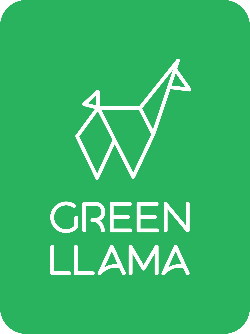Zero-Waste Cleaning: A Beginner's Guide to a Spotless, Sustainable Home
by Kay Baker on Oct 09, 2025
Sustainable Home
Zero-Waste Cleaning: A Beginner’s Guide to a Spotless, Sustainable Home
Transparency note: Educational guide with practical, evidence-aligned tips. Not medical or legal advice. Test new cleaners in a small, hidden area first.
If you’ve ever looked at your overflowing recycling bin and thought, “There has to be a better way,” you’re not alone. The journey toward a more sustainable lifestyle can feel overwhelming, but it doesn’t have to be. You can keep a sparkling home while dramatically reducing waste.
Welcome to zero-waste cleaning. It isn’t about perfection; it’s about small, intentional choices that add up to a big impact. This beginner-friendly guide shows you how to start today without sacrificing performance. For a deeper dive, see our Ultimate Guide to Natural Cleaning Products.
What Is Zero-Waste Cleaning, Really?
Zero-waste cleaning is a mindset focused on sending as little to landfill as possible. It extends the environmental hierarchy beyond recycling, prioritizing waste prevention first. Many people use the “5 Rs” popularized by Bea Johnson:
- Refuse — what you do not need (like single-use wipes or disposable mop heads)
- Reduce — what you do need (by choosing concentrated formulas)
- Reuse — what you have (by switching to refillable bottles and containers)
- Recycle — what you cannot refuse, reduce, or reuse
- Rot — compost the rest (like natural fiber sponges or compostable packaging)
The Problem with Plastic: Why Your Routine Matters
Most household cleaners come in single-use plastic bottles. While some are recyclable, less than 10% of plastic ever produced has been recycled. The rest ends up in landfills, incinerators, or our oceans. Choosing a zero-waste path is a direct, effective way to break this cycle.
Your Zero-Waste Toolkit: 5 Easy Swaps & Essentials
| Swap This | For This | Why It Matters |
|---|---|---|
| Plastic bottles & jugs | Compostable or refillable containers | Compostables break down properly; refillables avoid single-use plastic entirely. |
| Paper towels | Reusable cloths | Swedish dishcloths or cotton rags can be washed and reused hundreds of times, saving trees and money. |
| Plastic sponges | Compostable sponges or brushes | Cellulose or loofah sponges and wood-handle, natural-bristle brushes can be composted at end of life. |
| Single-use wipes | Spray bottle + cloth | Same job, zero daily waste — and kinder to surfaces and skin. |
| Liquid soap in plastic | Refillable dispensers or concentrated tablets | Buy in bulk or use tablets to refill a dispenser you already own, cutting plastic and shipping weight. |
Level Up: Adopting a Refill Mentality
Think of your cleaning bottle as a permanent tool. The only thing to replace is what goes inside it. Concentrates (tablets, powders, or liquids) help you:
- Eliminate plastic waste by reusing your bottle
- Lower your carbon footprint by shipping less water
- Save money- refills are usually cheaper per use
The Green Llama Way: Our durable glass bottles are built to last, and our concentrated cleaning tablets ship in compostable packaging. Drop a tablet in water and you’ve got a powerful, zero-waste clean.
Beyond the Bottle: Zero-Waste DIY & Disposal
A zero-waste mindset pairs perfectly with DIY. Buy vinegar and baking soda in bulk (glass jugs or cardboard boxes) to reduce packaging. When you’re finished with items, think “rot” before “trash.” Compost natural loofahs or the compostable packaging from your refills in you home compost or local facility.
Frequently Asked Questions
Is zero-waste cleaning expensive?
There can be a small upfront investment (glass bottles, high-quality cloths). Over time, refills and reusables typically save money.
What single step makes the biggest impact?
Switch your all-purpose cleaner to a refillable system. It’s used most often, so the waste and cost savings show up quickly.
Is recycling enough?
Recycling helps, but it’s the fourth “R.” Choose to refuse, reduce, and reuse first, then recycle what remains.
Trust & Reader Support
- 24-hour correction pledge: If you spot an error, we’ll review and update this article within 24 hours.
- Contact CX: hello@greenllamaclean.com





